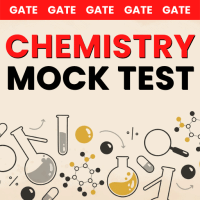Chemistry Exam > Chemistry Questions > The cooperative binding Of O2 in hemoglobin i...
Start Learning for Free
The cooperative binding Of O2 in hemoglobin is due to:
- a)A decrease in size of iron followed by changes in the proton conformation.
- b)An increase in size of iron fo llowed by changes in the proton conformat ion.
- c)A decrease in size of iron that is not accompanied by the protein comformational changes.
- d)An increase in size of iron that is not accompanied by the protein comformational changes.
Correct answer is option 'A'. Can you explain this answer?
Verified Answer
The cooperative binding Of O2 in hemoglobin is due to:a)A decrease in ...
Hemoglobin exhibits what we call cooperative binding, as oxygen binding increases the affinity of hemoglobin for more oxygen. Increased affinity is caused by a conformational change, or a structural change in the hemoglobin molecule.
View all questions of this test
Most Upvoted Answer
The cooperative binding Of O2 in hemoglobin is due to:a)A decrease in ...
Explanation:
Hemoglobin is a protein found in red blood cells that binds oxygen and transports it throughout the body. The cooperative binding of O2 in hemoglobin is due to several factors, including the size of the iron atom in the heme group and changes in the protein conformation.
Size of Iron:
The iron atom in the heme group of hemoglobin is in the ferrous (Fe2+) state and is coordinated by a nitrogen atom in the heme ring and four nitrogen atoms from the protein. When oxygen binds to the iron atom, it changes from the ferrous state to the ferric (Fe3+) state, causing a decrease in the size of the iron atom. This decrease in size is due to the loss of an electron, which causes the iron atom to contract.
Protein Conformation:
The binding of oxygen to one subunit of hemoglobin causes conformational changes in the protein that facilitate the binding of oxygen to the other subunits. When oxygen binds to the iron atom in one subunit, it causes a shift in the position of the heme group and a rotation of the protein subunits. This rotation exposes a new binding site for oxygen in the other subunits, making it easier for oxygen to bind to those subunits.
Cooperative Binding:
The combination of the decrease in size of the iron atom and the protein conformational changes result in cooperative binding of oxygen to hemoglobin. Once one oxygen molecule binds to hemoglobin, it makes it easier for subsequent molecules to bind due to the conformational changes in the protein. This means that as the oxygen concentration increases, more and more oxygen molecules will bind to hemoglobin until all of the binding sites are occupied.
Conclusion:
Therefore, the cooperative binding of O2 in hemoglobin is due to a decrease in size of iron followed by changes in the protein conformation. This allows for efficient transport of oxygen throughout the body.
Hemoglobin is a protein found in red blood cells that binds oxygen and transports it throughout the body. The cooperative binding of O2 in hemoglobin is due to several factors, including the size of the iron atom in the heme group and changes in the protein conformation.
Size of Iron:
The iron atom in the heme group of hemoglobin is in the ferrous (Fe2+) state and is coordinated by a nitrogen atom in the heme ring and four nitrogen atoms from the protein. When oxygen binds to the iron atom, it changes from the ferrous state to the ferric (Fe3+) state, causing a decrease in the size of the iron atom. This decrease in size is due to the loss of an electron, which causes the iron atom to contract.
Protein Conformation:
The binding of oxygen to one subunit of hemoglobin causes conformational changes in the protein that facilitate the binding of oxygen to the other subunits. When oxygen binds to the iron atom in one subunit, it causes a shift in the position of the heme group and a rotation of the protein subunits. This rotation exposes a new binding site for oxygen in the other subunits, making it easier for oxygen to bind to those subunits.
Cooperative Binding:
The combination of the decrease in size of the iron atom and the protein conformational changes result in cooperative binding of oxygen to hemoglobin. Once one oxygen molecule binds to hemoglobin, it makes it easier for subsequent molecules to bind due to the conformational changes in the protein. This means that as the oxygen concentration increases, more and more oxygen molecules will bind to hemoglobin until all of the binding sites are occupied.
Conclusion:
Therefore, the cooperative binding of O2 in hemoglobin is due to a decrease in size of iron followed by changes in the protein conformation. This allows for efficient transport of oxygen throughout the body.

|
Explore Courses for Chemistry exam
|

|
Question Description
The cooperative binding Of O2 in hemoglobin is due to:a)A decrease in size of iron followed by changes in the proton conformation.b)An increase in size of iron fo llowed by changes in the proton conformat ion.c)A decrease in size of iron that is not accompanied by the protein comformational changes.d)An increase in size of iron that is not accompanied by the protein comformational changes.Correct answer is option 'A'. Can you explain this answer? for Chemistry 2025 is part of Chemistry preparation. The Question and answers have been prepared according to the Chemistry exam syllabus. Information about The cooperative binding Of O2 in hemoglobin is due to:a)A decrease in size of iron followed by changes in the proton conformation.b)An increase in size of iron fo llowed by changes in the proton conformat ion.c)A decrease in size of iron that is not accompanied by the protein comformational changes.d)An increase in size of iron that is not accompanied by the protein comformational changes.Correct answer is option 'A'. Can you explain this answer? covers all topics & solutions for Chemistry 2025 Exam. Find important definitions, questions, meanings, examples, exercises and tests below for The cooperative binding Of O2 in hemoglobin is due to:a)A decrease in size of iron followed by changes in the proton conformation.b)An increase in size of iron fo llowed by changes in the proton conformat ion.c)A decrease in size of iron that is not accompanied by the protein comformational changes.d)An increase in size of iron that is not accompanied by the protein comformational changes.Correct answer is option 'A'. Can you explain this answer?.
The cooperative binding Of O2 in hemoglobin is due to:a)A decrease in size of iron followed by changes in the proton conformation.b)An increase in size of iron fo llowed by changes in the proton conformat ion.c)A decrease in size of iron that is not accompanied by the protein comformational changes.d)An increase in size of iron that is not accompanied by the protein comformational changes.Correct answer is option 'A'. Can you explain this answer? for Chemistry 2025 is part of Chemistry preparation. The Question and answers have been prepared according to the Chemistry exam syllabus. Information about The cooperative binding Of O2 in hemoglobin is due to:a)A decrease in size of iron followed by changes in the proton conformation.b)An increase in size of iron fo llowed by changes in the proton conformat ion.c)A decrease in size of iron that is not accompanied by the protein comformational changes.d)An increase in size of iron that is not accompanied by the protein comformational changes.Correct answer is option 'A'. Can you explain this answer? covers all topics & solutions for Chemistry 2025 Exam. Find important definitions, questions, meanings, examples, exercises and tests below for The cooperative binding Of O2 in hemoglobin is due to:a)A decrease in size of iron followed by changes in the proton conformation.b)An increase in size of iron fo llowed by changes in the proton conformat ion.c)A decrease in size of iron that is not accompanied by the protein comformational changes.d)An increase in size of iron that is not accompanied by the protein comformational changes.Correct answer is option 'A'. Can you explain this answer?.
Solutions for The cooperative binding Of O2 in hemoglobin is due to:a)A decrease in size of iron followed by changes in the proton conformation.b)An increase in size of iron fo llowed by changes in the proton conformat ion.c)A decrease in size of iron that is not accompanied by the protein comformational changes.d)An increase in size of iron that is not accompanied by the protein comformational changes.Correct answer is option 'A'. Can you explain this answer? in English & in Hindi are available as part of our courses for Chemistry.
Download more important topics, notes, lectures and mock test series for Chemistry Exam by signing up for free.
Here you can find the meaning of The cooperative binding Of O2 in hemoglobin is due to:a)A decrease in size of iron followed by changes in the proton conformation.b)An increase in size of iron fo llowed by changes in the proton conformat ion.c)A decrease in size of iron that is not accompanied by the protein comformational changes.d)An increase in size of iron that is not accompanied by the protein comformational changes.Correct answer is option 'A'. Can you explain this answer? defined & explained in the simplest way possible. Besides giving the explanation of
The cooperative binding Of O2 in hemoglobin is due to:a)A decrease in size of iron followed by changes in the proton conformation.b)An increase in size of iron fo llowed by changes in the proton conformat ion.c)A decrease in size of iron that is not accompanied by the protein comformational changes.d)An increase in size of iron that is not accompanied by the protein comformational changes.Correct answer is option 'A'. Can you explain this answer?, a detailed solution for The cooperative binding Of O2 in hemoglobin is due to:a)A decrease in size of iron followed by changes in the proton conformation.b)An increase in size of iron fo llowed by changes in the proton conformat ion.c)A decrease in size of iron that is not accompanied by the protein comformational changes.d)An increase in size of iron that is not accompanied by the protein comformational changes.Correct answer is option 'A'. Can you explain this answer? has been provided alongside types of The cooperative binding Of O2 in hemoglobin is due to:a)A decrease in size of iron followed by changes in the proton conformation.b)An increase in size of iron fo llowed by changes in the proton conformat ion.c)A decrease in size of iron that is not accompanied by the protein comformational changes.d)An increase in size of iron that is not accompanied by the protein comformational changes.Correct answer is option 'A'. Can you explain this answer? theory, EduRev gives you an
ample number of questions to practice The cooperative binding Of O2 in hemoglobin is due to:a)A decrease in size of iron followed by changes in the proton conformation.b)An increase in size of iron fo llowed by changes in the proton conformat ion.c)A decrease in size of iron that is not accompanied by the protein comformational changes.d)An increase in size of iron that is not accompanied by the protein comformational changes.Correct answer is option 'A'. Can you explain this answer? tests, examples and also practice Chemistry tests.

|
Explore Courses for Chemistry exam
|

|
Signup for Free!
Signup to see your scores go up within 7 days! Learn & Practice with 1000+ FREE Notes, Videos & Tests.


















